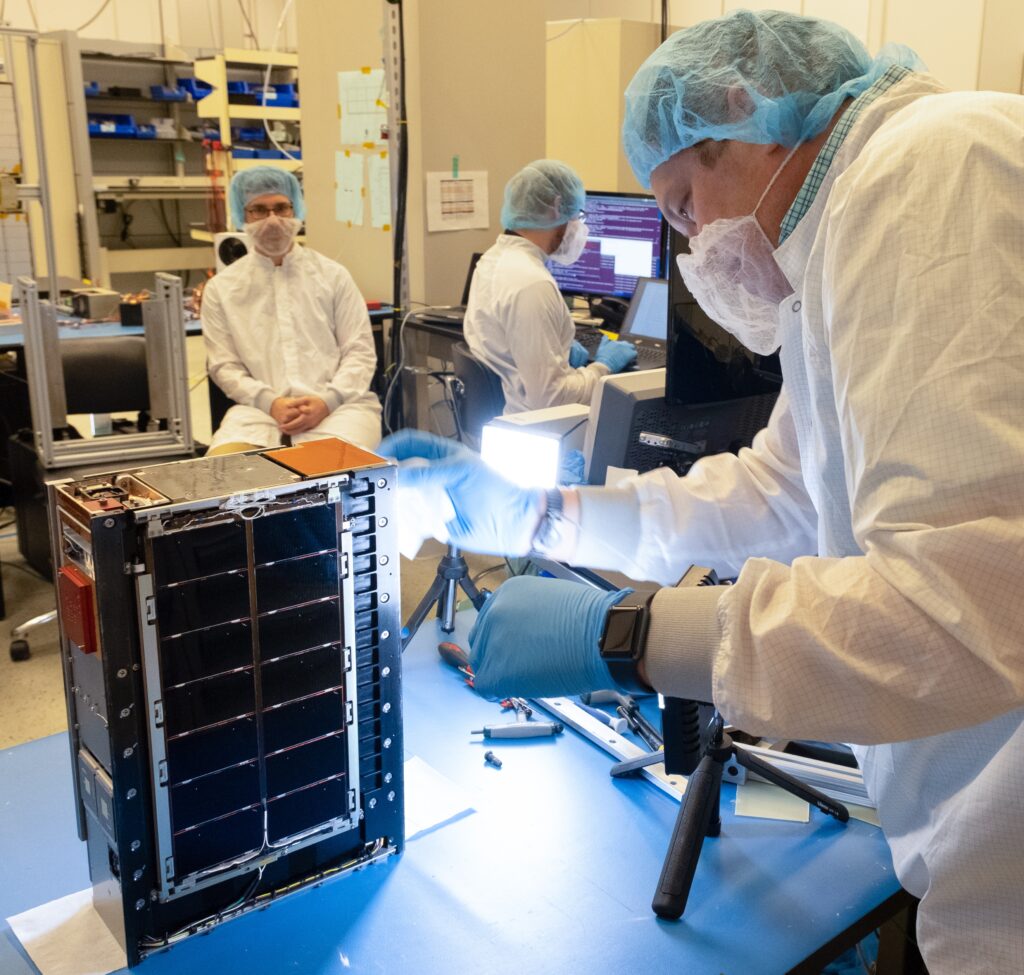NASA’s LunaH-Map (Lunar Polar Hydrogen Mapper) mission, a briefcase-sized lunar orbiter that launched as a ride share on NASA’s Artemis I mission last year, has ceased operations after successfully demonstrating its neutron spectrometer can detect water and ice at the lunar surface.
The LunaH-Map CubeSat was designed to map ice deposits across the Moon’s South Pole as part of NASA’s SIMPLEx (Small Innovative Missions for Planetary Exploration) program. It performed a flyby of the Moon shortly after its Nov. 16, 2022, launch on the Space Launch System rocket, but challenges with the spacecraft’s thruster valve prevented it from adjusting course to achieve its planned science orbit around the lunar South Pole. This ambitious orbit was designed to take measurements from altitudes as low as 6.2 miles (10 kilometers), including over the permanently shadowed regions of the Moon.

In late November, the mission team concluded the propulsion system’s valve was partially stuck. The team then embarked on a six-month effort to repeatedly heat the valve in order to free it and allow for ignition. In late May, it was determined these attempts were unsuccessful and mission operations ceased. The spacecraft’s trajectory will evolve into a stable orbit around the Sun, and the LunaH-Map mission and science team will continue to work on data reduction and publishing scientific results.
During the lunar flyby in November, LunaH-Map’s neutron spectrometer, which was developed and built for this mission by Arizona State University in Tempe, collected nearly three hours of data from the Moon’s surface from a distance of about 800 miles (1300 kilometers). The spectrometer’s rate of neutron detections demonstrated that this instrument can function in the lunar environment and identify enrichments of ice as deep as 3.3 feet (one meter) below the soil.
High-energy neutrons are created in nuclear interactions between cosmic rays and the atoms that make up lunar rocks and soils. LunaH-Map’s neutron spectrometer looked for suppressions of the neutron energies that leak out of the Moon. These measurements usually indicate the presence of hydrogen; and generally, where there is hydrogen, there is water. During the lunar flyby, LunaH-Map’s instrument successfully detected neutrons leaking from the Moon and measured the neutron signal increasing as the spacecraft approached the Moon.
“We are thrilled that the LunaH-Map team was able to use this opportunity to demonstrate the capability of its neutron spectrometer in flight, even though the mission could not be completed as planned,” said Lori Glaze, director of the Planetary Science Division at NASA Headquarters in Washington. “SIMPLEx missions are inherently risky, as they are designed to test the bounds of what can be achieved with lower-cost missions.”
A version of this now flight-proven science instrument is scheduled to be integrated onto NASA’s upcoming Lunar-VISE (Lunar Vulkan Imaging and Spectroscopy Explorer) payload to be delivered to the lunar surface on a future flight through NASA’s CLPS (Commercial Lunar Payload Services) initiative.
LunaH-Map is led by Craig Hardgrove at Arizona State University. The mission was selected in the first round of NASA’s SIMPLEx program, which provides opportunities for low-cost, high-risk science missions to ride-share with selected primary missions. These lower cost missions serve as an ideal platform for technical and architecture innovation, contributing to NASA’s science research and technology development objectives.
SIMPLEx mission investigations are managed by the Planetary Missions Program Office at NASA’s Marshall Space Flight Center in Huntsville, Alabama, as part of the Discovery Program at NASA Headquarters in Washington. NASA provided a ride to deep space aboard the Space Launch System rocket for 10 CubeSats, each of which have separate missions from the agency’s Artemis I flight test.


